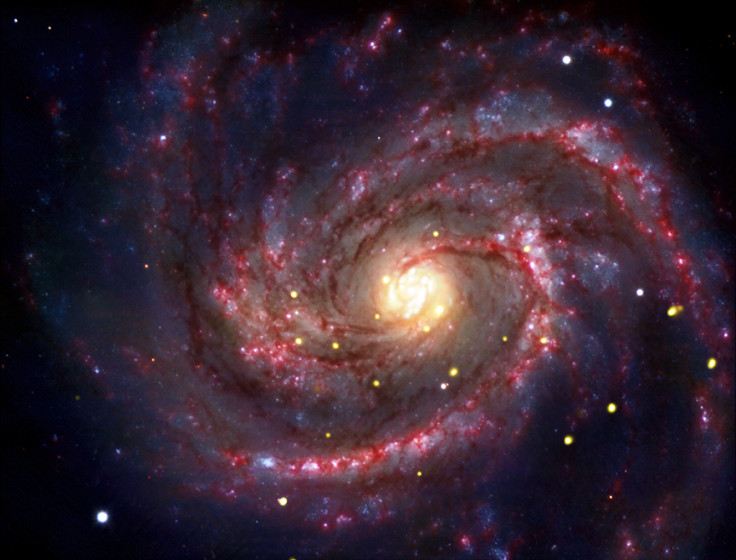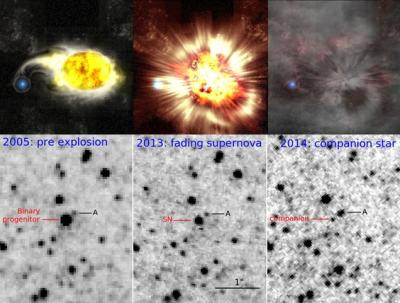Nasa's Hubble: Bright Blue Star Discovered Reveals Missing Piece of Supernova Puzzle

Astrophysicists have found evidence of a bright blue star, a hot binary companion star to a yellow supergiant star, which had become a bright supernova.
A team led by Gastón Folatelli at the Kavli IPMU, the University of Tokyo, had previously predicted the existence of the companion star on the basis of numerical calculations.
The finding provides the last link in a chain of observations that have so far supported the team's theoretical picture for this supernova - and the results have wide implications for our knowledge of binary systems and supernova mechanisms.
"One of the most exciting moments in my career as an astronomer was when I displayed the newly arrived Hubble Space Telescope images and saw the object right there, where we had anticipated it to be all along" said Folatelli.
The team used Hubble Space Telescope observations to find the star.
Astrophysicists have previously questioned how massive stars spend their short lives until they become supernovae - stellar explosions that radiate huge amounts of energy. The standard theory, applicable to isolated stars, states only cool and extended (red supergiants) or hot and blue (Wolf-Rayet stars) are able to become supernovae.

However, growing evidence suggests that although most massive stars are on their own, they belong to close binary systems.
Episodes of mass transfer between the members of binary star systems affect the way the stars evolve, meaning that there are many more potential scenarios for the final stages of supernova ancestors.
The nearby supernova SN 2011dh, which occurred in 2011 in the whirlpool galaxy M51, is around 24 million light-years away from Earth, and is an example that cannot be explained by the standard theory.
What appeared to be a yellow supergiant star was detected at the location of the supernova in images obtained before the explosion, but yellow supergiant stars in isolation were not thought capable of becoming supernovae.
Various astronomers suggested that the actual progenitor could have been an unseen bright blue object, such as a Wolf-Rayet star.
However, the team at Kavli IPMU, along with Argentina's University of La Plata, showed that the exploding star must have been extended, like a yellow supergiant - and that it must have belonged to a binary system.
"We produced detailed models that self-consistently explained every property of SN 2011dh through the explosion of a yellow supergiant star in a binary system," researcher Melina Bersten told Phys.org.
Their theory was further supported when the disappearance of the yellow supergiant was observed, indicating that it, and not a bright blue star, was the exploding object.
The team then obtained ultraviolet images which validated the existence of a companion star, as they revealed a point source at the exact location of the supernova.
This is one of the first detailed studies of the ancestor of a supernova, shedding light on our knowledge of stellar evolution and its connection with supernova properties.
The discovery was published in the Astrophysical Journal Letters.
© Copyright IBTimes 2025. All rights reserved.






















